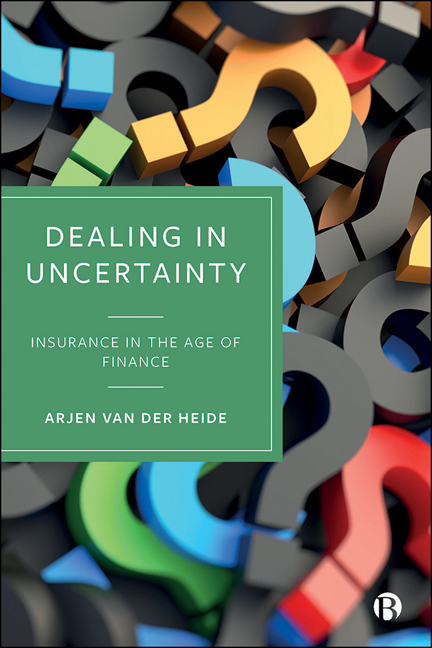Book contents
- Frontmatter
- Contents
- List of Figures
- Acknowledgements
- 1 Life Insurance in the Age of Finance
- 2 Financialization, Quantification and Evaluation
- 3 Shifting Boundaries between Insurance and Finance
- 4 Actuaries Going on a Random Walk
- 5 ‘Authors of Their Own Misfortune’
- 6 ‘Taking Account of What the Market Has to Say’
- 7 Managing Risk in Insurance
- 8 The Long Road to Solvency II (and Back Again?)
- 9 De-Risking Pensions, Managing Assets
- 10 Financial Evaluation and the Future of Insurance Society
- Notes
- References
- Index
3 - Shifting Boundaries between Insurance and Finance
Published online by Cambridge University Press: 20 January 2024
- Frontmatter
- Contents
- List of Figures
- Acknowledgements
- 1 Life Insurance in the Age of Finance
- 2 Financialization, Quantification and Evaluation
- 3 Shifting Boundaries between Insurance and Finance
- 4 Actuaries Going on a Random Walk
- 5 ‘Authors of Their Own Misfortune’
- 6 ‘Taking Account of What the Market Has to Say’
- 7 Managing Risk in Insurance
- 8 The Long Road to Solvency II (and Back Again?)
- 9 De-Risking Pensions, Managing Assets
- 10 Financial Evaluation and the Future of Insurance Society
- Notes
- References
- Index
Summary
Why did Hambro Life, Britain's most successful life assurance company, pay £10.4m, or more than four times book value, this week, for Dunbar, a tiny merchant bank whose only claim to fame is that Sean Connery owns 8 per cent of the action and several of sports promoter Mark McCormack's stable are among its client list? It is a question that has been hotly debated over City luncheon tables as analysts try to reconcile the price Hambro Life is paying for an unknown licensed deposit taker with the lowly rating normally accorded to bank shares. (Hall, 1982)
In 1982, this was still a genuine question. Life insurance and banking were distinct markets, each operating with distinct knowledge machineries and distinct systems of supervision. The management of Hambro Life, a relative newcomer to the market, however, thought differently. The company was founded in 1970 by the South African insurance entrepreneur Mark Weinberg, who in 1961 had already successfully set up another company, Abbey Life. Both companies had gained substantial market share by aggressively competing in the market using a large direct sales force. Yet, maintaining such a large sales force – Hambro Life employed over 3,000 sales agents in 1982 – was also expensive. Weinberg therefore envisioned Hambro Life expanding its business operations in a market for financial services at large. ‘We feel very strongly that the dividing lines between various financial institutions are going to break down’, he was reported saying by a Financial Times reporter. ‘We are in a strong position to make our life assurance company the hub of an integrated financial services operation on a lower cost basis than either a clearing bank or a building society which have to carry very large high street branch networks’ (Hall, 1982).
Regardless of how successful Weinberg's efforts to integrate insurance and banking services were or not, what matters here is that Weinberg perceived life insurance predominantly as a financial service. In so doing, Weinberg's ideas about life insurance differed quite substantially from what would have counted as actuarial orthodoxy at the time and the idea that life insurance operated on a different, incommensurable logic relative to finance.
- Type
- Chapter
- Information
- Dealing in UncertaintyInsurance in the Age of Finance, pp. 36 - 55Publisher: Bristol University PressPrint publication year: 2023



